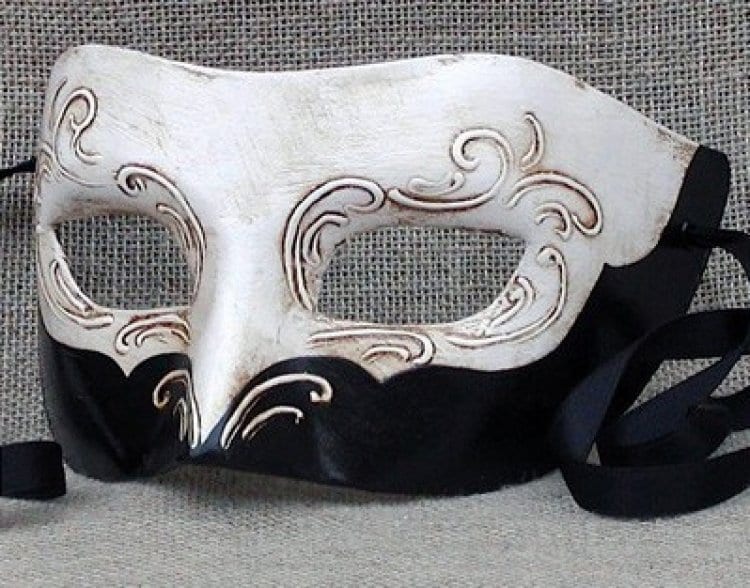
2008 was tough for Menachem and Lena Dickman. That was the year the economy bottomed out, leaving Menachem, like millions of other Americans, out of a job. The Dickmans had just bought a house in Livingston, New Jersey, after moving from California, and their sudden change of fortune left them effectively wiped out. “I’m a worrier by nature,” admits Lena, a sweet-natured native of Brooklyn. “I was convinced that we were going to be homeless.” And, indeed, their situation was difficult for a while. “We had to be very careful with every penny. We had to think twice about what we were buying, everything [from] Shabbos meals [to] clothing for the kids.”
The experience, Lena says, changed her entire mindset. Even when their situation took a turn for the better, she was still cautious when it came to spending. When Purim rolled around, naturally her children wanted new costumes. “As much as I always say I’m going to think about the costumes earlier, I don’t,” Lena says, laughing. “And then Purim comes and it’s like, ‘Okay, now what?’” The costumes she found cost upwards of $15 apiece (some as much as $50)—an exorbitant price, Lena felt, for something her children would only wear once or twice: “You want to get the kids what they want, and especially in Adar, Mishenichnas Adar marbin b’simchah; you don’t want anything to dampen their happiness…[but]when every penny counts, even twenty dollars makes a difference.” Around that time, Lena, who commutes 45 minutes each way to teach special education in rural Long Valley, New Jersey, came upon a number of costumes her children had worn in years past.
Recalling her and Menachem’s struggle, the thought occurred to her that the costumes could perhaps be of use to another family in need—of whom, she had long since realized, there were many. “It’s chaval [for them] to not have somewhere to go,” she thought. Which is how her costume gemach was born. That first year, as Lena spread the word about her gemach, people began contacting her with costumes to donate.
Her collection began to grow, and continues to do so, five years later. Compared to other in-town gemachim, which sometimes have hundreds of costumes to offer, Lena’s collection is small. But in her opinion, numbers don’t matter: “Everything you do counts.” It certainly counts to the children who come to borrow, free of charge. The first time someone offered her money for a costume, Lena was completely caught off guard. “I know some gemachs [do that],” she says, “but I don’t do that at all.” Instead, she dedicates her mitzvah l’zeicher nishmas Yehudah ben Baruch HaLevi, her maternal grandfather. The opportunity to honor her grandfather’s memory was a long time coming, Lena recalls. For eighteen years of marriage to Menachem, Lena watched him and his large extended family gather every year on their grandparents’ yahrzeit to make a siyum on mishnayos.
Lena’s family, in contrast, is quite small; her mother was an only child and was young when her father passed away. At the siyumim with Menachem and his family, the thought crossed Lena’s mind that she wished she could do something for her grandfather. But at the time, she says, “I didn’t feel like there was anything I could do. But then, when I thought about [starting the gemach], I thought, ‘This is something I could do as a zechus for him.’’’ Her grandfather’s memory has indeed been honored by the many children who have come to borrow Purim costumes. For some, the gemach provides them with a unique opportunity to connect to Purim.
One little boy, for instance, attended public school and was not getting much of a Jewish education; however, with Lena’s help, he was able to celebrate Purim in a way he might not have been able to otherwise. Grandparents have also been in touch with her, wishing to find costumes for their grandchildren, so that they can celebrate together as a family. But perhaps the children most deeply affected by the gemach are Lena’s. “They get very excited about it,” she says. “They like going through the costumes. My daughter has things she likes to put in. They help organize it. I think they like having it in the house!” So what’s next on the agenda for Lena? Aside from juggling her family and work demands, she tries to carve out time for her passion: reading.
Their house, she says, is overflowing with books, crowding the shelves and crammed into boxes. At one point, Menachem worked for ArtScroll, which only added to their abundant collection of books. But Lena doesn’t mind the traffic: “You can never have too many books, I don’t think.” Maybe, I suggest, it’s time to start a book gemach? Lena laughs. “I know, right?”
